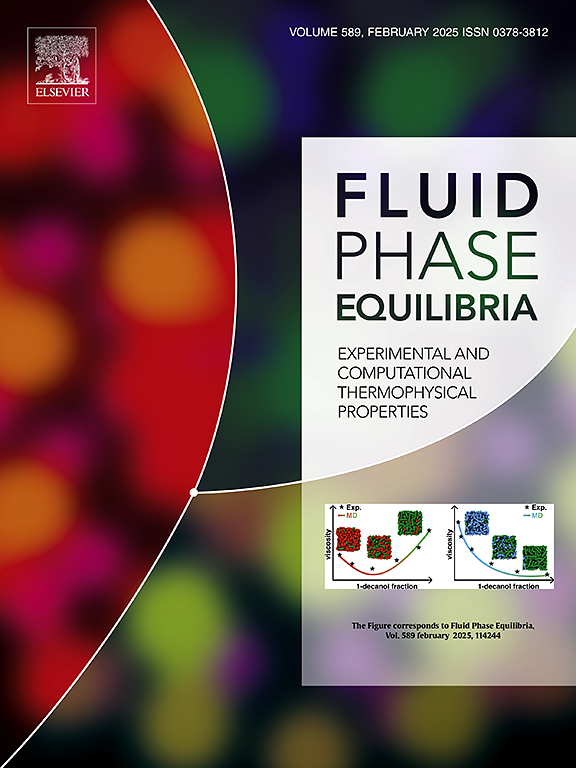High purity carbon dioxide captured with guanidinium sulfate clathrate from carbon dioxide/hydrogen mixtures
IF 2.8
3区 工程技术
Q3 CHEMISTRY, PHYSICAL
引用次数: 0
Abstract
CO2 capture based on clathrate technology is an environmentally friendly separation approach, but low capture efficiency limits further commercial applications. Therefore, an innovative gas separation technology based on the efficient capture of CO2 by guanidinium sulfate (Gua2SO4) clathrate was proposed. First, the phase equilibrium data of Gua2SO4 solution with CO2, mixture (50.0 mol.% CO2-50.0 mol.% H2) were reported with temperature range from 294.6 to 304.6 K and pressure range from 0.25 to 0.92 MPa. They effectively reduced the formation pressure of CO2 clathrate rather than H2 clathrate, which revealed that it could selectively enter into clathrate cages. With the support of this theory, 72.0 wt.% (72.0 wt.%) Gua2SO4 solution was applied to obtain CO2 concentration of 99.2 mol.% in the clathrate phase under the conditions of a gas-liquid ratio of 9.7, temperature of 277.0 K, and pressure of 1.0 MPa, realizing high-selective CO2 capture of the gas mixture with 50 mol.% CO2-50 mol.% H2. With the decrease of driving force, the separation efficiency was increased. Raman analysis results further showed that H2 did not enter the clathrate cages in the presence of Gua2SO4 during the separation of the CO2-H2 mixture, which was consistent with the experimental results. Furthermore, the minimum theoretical work of separation was calculated to be only 56.2 kJ/kg CO2. This approach of high-selective CO2 capture with Gua2SO4 provides new ideas and methods for the application of clathrate technology in the field of gas separation and carbon capture, which lays the foundation for commercial development.
求助全文
约1分钟内获得全文
求助全文
来源期刊

Fluid Phase Equilibria
工程技术-工程:化工
CiteScore
5.30
自引率
15.40%
发文量
223
审稿时长
53 days
期刊介绍:
Fluid Phase Equilibria publishes high-quality papers dealing with experimental, theoretical, and applied research related to equilibrium and transport properties of fluids, solids, and interfaces. Subjects of interest include physical/phase and chemical equilibria; equilibrium and nonequilibrium thermophysical properties; fundamental thermodynamic relations; and stability. The systems central to the journal include pure substances and mixtures of organic and inorganic materials, including polymers, biochemicals, and surfactants with sufficient characterization of composition and purity for the results to be reproduced. Alloys are of interest only when thermodynamic studies are included, purely material studies will not be considered. In all cases, authors are expected to provide physical or chemical interpretations of the results.
Experimental research can include measurements under all conditions of temperature, pressure, and composition, including critical and supercritical. Measurements are to be associated with systems and conditions of fundamental or applied interest, and may not be only a collection of routine data, such as physical property or solubility measurements at limited pressures and temperatures close to ambient, or surfactant studies focussed strictly on micellisation or micelle structure. Papers reporting common data must be accompanied by new physical insights and/or contemporary or new theory or techniques.
 求助内容:
求助内容: 应助结果提醒方式:
应助结果提醒方式:


